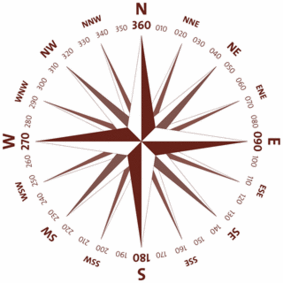Why go on voyages?
One aim of the sailing trials is to contribute to the other archaeological and technical descriptions of ships by explaining their practical use, and also revealing the opportunities this use had provided for the society that originally produced them. Or, in other words: what opportunities were provided by the construction, cargo-carrying capacity, sailing abilities and seaworthiness of these ships for contemporary transport and communication?
Another aim is to provide figures for the ship’s performance that can be compared with data from other types of vessel which have been investigated, both from the Viking Age and other periods. These figures can also be compared with information from contemporary written sources concerning travelling speed at sea.
Finally, the sailing trials also have the aim of training the ships’ crews in handling these large open vessels and safely carrying out manoeuvres in all kinds of weather with the long forgotten and therefore unaccustomed single square rig technique. This includes, of course, both veering and tacking under sail, reefing, taking in sails, laying to, picking up people who have fallen overboard and, in the case of the warships and small boats, rowing.
The general working method used in carrying out the experimental voyages is ‘experimental archaeology’. The experimental part of the archaeology is based on a ‘hands-on’ form of research and communication.
It is therefore necessary to sail in order to be able to interpret the use and importance of ships in the past, just as it is necessary to sail in order to practise and preserve the practical seamanship which is the essential craft needed to handle ships such as these.
Among others things, the voyages resulted in hundreds of lognotes. These notes can be found under the individual voyages.
Armchair comments
The Viking Ship Museum has asked a number of experts to comment on the Sea Stallion’s voyage to Dublin, based upon their personal knowledge and experience.
» Read all the comments here...
The Vikings used tents on their longships
The Sea Stallion's rain-soaked passage from Roskilde to South Norway leaves us with the question, whether tents…
Waiting for a fair wind
On this web site it has been possible to follow the Sea Stallion’s operations along the Norwegian coast from…
On keeping warm at sea – how the Faroese do it
The evacuation of three severely chilled crew-members from the Sea Stallion on the voyage from Roskilde to Southern…
The Sea Stallion and its speed potential
Observations made from the accompanying boat Martha, while the Sea Stallion was sailing out through Roskilde Fiord…
The Sea Stallion’s voyage to Ireland - an adventure only?
With the launching of the Sea Stallion from Glendalough in summer 2004 the Viking Ship Museum in Roskilde could…
Viking Age thoughts on navigation
The Viking navigator had no access to the precision instruments and the amount of information that we are used to…
![[Translate to english:] [Translate to english:]](/frontend/_processed_/3/9/csm_2007_07_20_20_49_45_WK__3__879278faae.jpg)
![[Translate to english:] [Translate to english:]](/frontend/_processed_/c/a/csm_2007_07_28_18_10_47_WK_fdf348c823.jpg)
![[Translate to english:] [Translate to english:]](/frontend/_processed_/3/5/csm_skjoldungen7_c4bae2384b.jpg)
![[Translate to english:] [Translate to english:]](/frontend/_processed_/f/b/csm_2007_07_29_17_40_52_WK__3__0057f836d2.jpg)
![[Translate to english:] [Translate to english:]](/frontend/_processed_/5/8/csm_2008_07_14_21_51_40_3312_WK_b8760881c4.jpg)
